I have the dataframe (sample) below:
companyID year yearID
1 2010 1
1 2011 2
1 2012 3
1 2013 4
2 2010 1
2 2011 2
2 2016 3
2 2017 4
2 2018 5
3 2010 1
3 2011 2
3 2014 3
3 2017 4
3 2018 5
I have used a for loop in order to try and create a sequence column that starts a new number for each new sequence of numbers. I am new to R so my definitions may be a bit wrong. My for loop looks like this:
size1 <- c(1:3)
s <- 0
for (val1 in size) {
m <- max(sample[sample$companyID == val1, 4])
size2 <- c(1:m)
for (val2 in size2){
row <- sample[which(sample$companyID == val1 & sample$yearID == val2)]
m1 <- sample[sample$companyID == val1 & sample$yearID == val2, 2]
m2 <- sample[sample$CompanyID == val1 & sample$yearID == (val2-1), 2]
if(val2>1 && m1-m2 > 1) {
sample$sequence[row] s = s+1}
else {s = s}
}
}
Where m is the max value of the yearID per companyID, row is to identify that the value should be entered on the row where companyID = val1 and yearID = val2, m1 is from the year variable and is the latter year, whereas m2 is the former year. What I have tried to do is to change the sequence every time m1-m2 > 1 (when val2 > 1 also).
Desired outcome:
companyID year yearID sequence
1 2010 1 1
1 2011 2 1
1 2012 3 1
1 2013 4 1
2 2010 1 2
2 2011 2 2
2 2016 3 3
2 2017 4 3
2 2018 5 3
3 2010 1 4
3 2011 2 4
3 2014 3 5
3 2017 4 6
3 2018 5 6
Super appreciative if anyone can help!!
